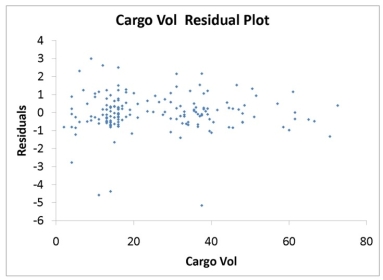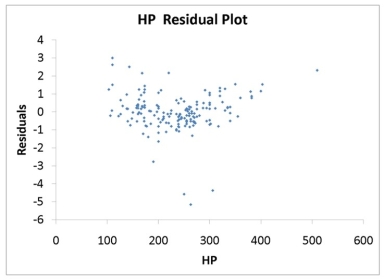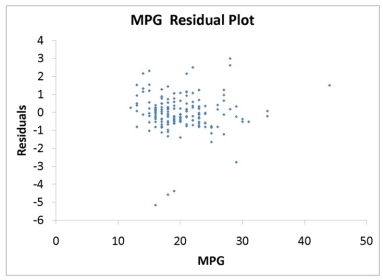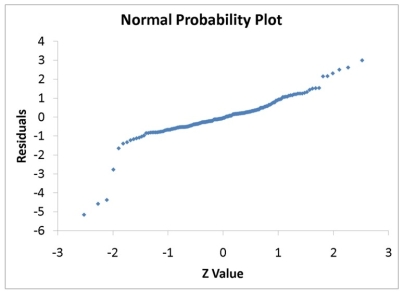Multiple Choice
TABLE 13-16
What are the factors that determine the acceleration time (in sec.) from 0 to 60 miles per hour of a car? Data on the following variables for 171 different vehicle models were collected:
Accel Time: Acceleration time in sec.
Cargo Vol: Cargo volume in cu. ft.
HP: Horsepower
MPG: Miles per gallon
SUV: 1 if the vehicle model is an SUV with Coupe as the base when SUV and Sedan are both 0
Sedan: 1 if the vehicle model is a sedan with Coupe as the base when SUV and Sedan are both 0
The regression results using acceleration time as the dependent variable and the remaining variables as the independent variables are presented below.

The various residual plots are as shown below.





The coefficient of multiple determination for the regression model using each of the 5 variables Xj as the dependent variable and all other X variables as independent variables (Rj2) are, respectively, 0.7461, 0.5676, 0.6764, 0.8582, 0.6632.
-Referring to Table 13-16, what is the correct interpretation for the estimated coefficient for Cargo Vol?
A) As the 0 to 60 miles per hour acceleration time increases by one second, the mean cargo volume will increase by an estimated 0.0259 cubic foot, without taking into consideration all the other independent variables included in the model.
B) As the cargo volume increases by one cubic foot, the mean 0 to 60 miles per hour acceleration time will increase by an estimated 0.0259 seconds, without taking into consideration all the other independent variables included in the model.
C) As the 0 to 60 miles per hour acceleration time increases by one second, the mean cargo volume will increase by an estimated 0.0259 cubic foot, taking into consideration all the other independent variables included in the model.
D) As the cargo volume increases by one cubic foot, the mean 0 to 60 miles per hour acceleration time will increase by an estimated 0.0259 seconds, taking into consideration all the other independent variables included in the model.
Correct Answer:

Verified
Correct Answer:
Verified
Q49: The interpretation of the slope is different
Q75: TABLE 13-4<br>A real estate builder wishes to
Q77: TABLE 13-6<br>One of the most common questions
Q78: TABLE 13-17<br>Given below are results from the
Q79: TABLE 13-15<br>The superintendent of a school district
Q81: TABLE 13-15<br>The superintendent of a school district
Q83: TABLE 13-9<br>You decide to predict gasoline prices
Q84: TABLE 13-7<br>The department head of the accounting
Q85: TABLE 13-11<br>A weight-loss clinic wants to use
Q199: The coefficient of multiple determination is calculated